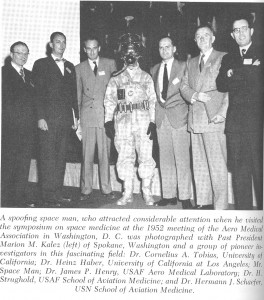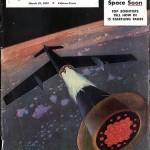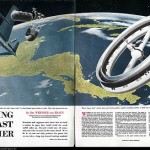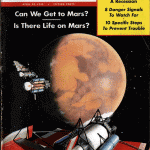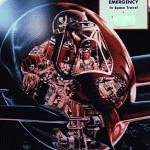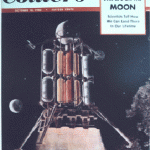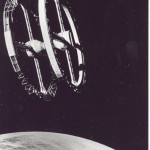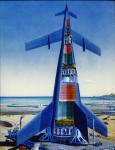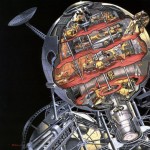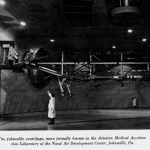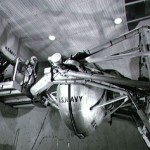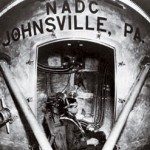March 19: The second official meeting of the Space Medicine Branch in Washington DC at the annual Aeromedical Association meeting with 50 people attending. Membership now was at 36, plus 7 new members. The speaker was Dr. Clayton White (Director of Research, Lovelace Foundation) who presented “The Challenge of Space”. The talk is summarized in  Space Medicine Branch History 1950-1957 By Dr. Paul Campbell (189.0 KiB)
Space Medicine Branch History 1950-1957 By Dr. Paul Campbell (189.0 KiB)
 SMA Annual Business Meeting 1952 (69.8 KiB)
SMA Annual Business Meeting 1952 (69.8 KiB)
 Program 1952 (44.6 KiB)
Program 1952 (44.6 KiB)
March 22: Colliers Magazine published its first space symposium under the title, “Man Will Conquer Space Soon”. Contributors were Dr. Wernher von Braun, Dr. Joseph Kaplan, Dr. Heinz Haber, Willy Ley, Cornelius Ryan, Dr. Oscar Schachter, and Dr. Fred L. Whipple.
March 22, 1952: Man Will Conquer Space Soon, a collection of eight articles.
October 18, 1952: Man on the Moon, The Journey, and Inside the Moon Ship
October 25, 1952: Man on the Moon, Inside the Lunar Base
February 28, 1953: World’s First Space Suit
March 7, 1953: Testing the Men in Space
March 14, 1953: How Man Will Meet Emergency in Space
June 27, 1953: Baby Space Station
April 30, 1954: Can We Get to Mars? and Is There Life on Mars
- Colliers 032252
- Colliers22Mar52a
- Colliers 043054
- Collier3
- Collier4
- Colliers Space Station
- Colliers 5
- Colliers Mars Spacecraft
 Goddard Colliers 3 (4.6 MiB)
Goddard Colliers 3 (4.6 MiB)
June 18: H. Julian Allen of NACA Ames Laboratory conceived of the blunt nose principle for reentry vehicles, later used in ICBM’s and Project Mercury.
June 20: Col. J. L. Zoeckler of the Air Force testified before Congress in executive committee sessions that the Soviet Union is making spectacular progress on guided missiles.
June: The Navy’s Johnsville, PA. human centrifuge went into operation.
- Johnsville Centri fuge 1
- Johnsville Centrifuge 2
- Johnsville Centrifuge 3
- Johnsville Centrifuge
September 19: The 71st V-2 was fired at White Sands, concluding the use of this German missile for upper atmosphere research in the United States. Only 68% of the launches were considered successful.
October: The International Polar Year was broadened into the International Geophysical Year.
November 1: Hydrogen bomb detonated in the Marshall Islands test site.
November 19: The first liquid rocket engine with a thrust of over 100,000 pounds was test fired in the Santa Susana Mountains, California in connection with the Navaho program.
Dr. Wernher von Braun published “Das Marsprojekt” (The Mars Project), a detailed plan that had been developed during 1946-1948 for a manned expedition to Mars and return.
During the year the Air Force began design work on a 405,000-pound thrust liquid rocket engine for the Navaho program.
Journal of Aviation Medicine articles:
Gerathewohl, S J. Physics and psychophysics of weightlessness–visual perception.
 23040373-1 (380.4 KiB)
23040373-1 (380.4 KiB)
Henry, J P, Ballinger, E R, Maher, P J, Simons, D G. Animal studies of the subgravity state during rocket flight. xxxxxxxxxx JAM 1952 23: 421-432.
 23050421-1 (392.0 KiB)
23050421-1 (392.0 KiB) Suborbital (420.8 KiB)
Suborbital (420.8 KiB)
Ballinger, ER. Human Experiments in subgravity and prolonged acceleration.
 23040319-1 (73.3 KiB)
23040319-1 (73.3 KiB)
Schaefer, H J. Exposure hazards from cosmic radiation beyond the stratosphere and in free space. x JAM 1952 23: 334-344, 401.
 23040334-1 (366.4 KiB)
23040334-1 (366.4 KiB) Radiation (539.5 KiB)
Radiation (539.5 KiB)
Strughold, H. Ecological aspects of planetary atmospheres with special references to Mars. JAM 1952 23: 130-140.
 23020130-1 (234.7 KiB)
23020130-1 (234.7 KiB)
Strughold, H. From aviation medicine to space medicine.
 23040315-1 (114.0 KiB)
23040315-1 (114.0 KiB)
Clamann HG. Continuous Recording of Oxygen, Carbon Dioxide and Other Gases in Sealed Cabins. xxx JAM 1952 23: 330-333.
 23001 (219.7 KiB)
23001 (219.7 KiB)

